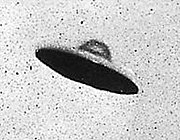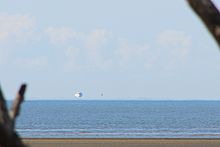
An unidentified flying object (UFO), or unidentified anomalous phenomenon (UAP), is any perceived airborne, submerged or transmedium phenomenon that cannot be immediately identified or explained. Upon investigation, most UAPs are identified as known objects or atmospheric phenomena, while a small number remain unexplained.

Project Blue Book was the code name for the systematic study of unidentified flying objects by the United States Air Force from March 1952 to its termination on December 17, 1969. The project, headquartered at Wright-Patterson Air Force Base, Ohio, was initially directed by Captain Edward J. Ruppelt and followed projects of a similar nature such as Project Sign established in 1947, and Project Grudge in 1949. Project Blue Book had two goals, namely, to determine if UFOs were a threat to national security, and to scientifically analyze UFO-related data.
On January 7, 1948, 25-year-old Captain Thomas F. Mantell, a Kentucky Air National Guard pilot, died when he crashed his P-51 Mustang fighter plane near Franklin, Kentucky, United States, after being sent in pursuit of an unidentified flying object (UFO). Mantell pursued the object in a steep climb and disregarded suggestions to level his altitude. At high altitude, he blacked out from a lack of oxygen; his plane went into a downward spiral and crashed. The incident was among the most publicized of early UFO reports. Later investigation by the United States Air Force's Project Blue Book indicated that Mantell died chasing a Skyhook balloon, which, in 1948, was a top-secret project that he would not have known about.
The extraterrestrial hypothesis (ETH) proposes that some unidentified flying objects (UFOs) are best explained as being physical spacecraft occupied by extraterrestrial intelligence or non-human aliens, or non-occupied alien probes from other planets visiting Earth.
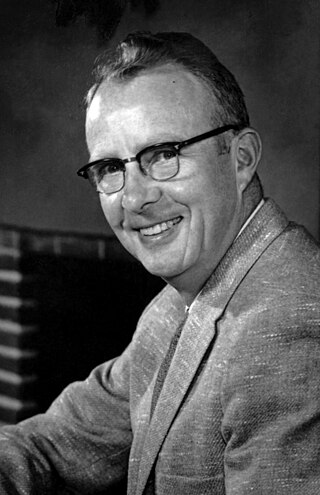
The Robertson Panel was a scientific committee which met in January 1953 headed by Howard P. Robertson. The Panel arose from a recommendation to the Intelligence Advisory Committee (IAC) in December 1952 from a Central Intelligence Agency (CIA) review of the U.S. Air Force investigation into unidentified flying objects, Project Blue Book. The CIA review itself was in response to widespread reports of unidentified flying objects, especially in the Washington, D.C. area during the summer of 1952.
Green fireballs are a type of unidentified flying object (UFO) that has been reported since the early 1950s. Early sightings primarily occurred in the southwestern United States, particularly in New Mexico. Although some ufologists and ufology organizations consider green fireballs to be of artificial extraterrestrial origin, mainstream, non-pseudoscientific explanations have been provided, including natural bolides.

Project Grudge was a short-lived project by the U.S. Air Force (USAF) to investigate unidentified flying objects (UFOs). Grudge succeeded Project Sign in February, 1949, and was then followed by Project Blue Book. The project formally ended in December 1949, but continued in a minimal capacity until late 1999.
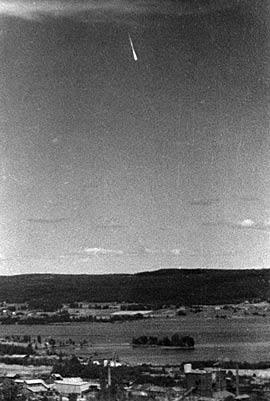
Ghost rockets were rocket- or missile-shaped unidentified flying objects sighted in 1946, mostly in Sweden and nearby countries like Finland.
This is a list of alleged sightings of unidentified flying objects or UFOs in Iran.

Project Condign was a secret unidentified flying object (UFO) study undertaken by the British Government's Defence Intelligence Staff (DIS) between 1997 and 2000.
The Chicago O'Hare UFO sighting occurred on November 7, 2006, around 4:15 p.m. when 12 United Airlines employees and a few witnesses outside O'Hare International Airport reported a sudden UFO sighting. The Federal Aviation Administration refused to investigate the matter because this unidentified flying object (UFO) was not seen on radar, instead calling it a "weather phenomenon".

Jimmy Carter, United States president from 1977 until 1981, reported seeing an unidentified flying object while at Leary, Georgia, in 1969. While serving as governor of Georgia, Carter was asked by the International UFO Bureau in Oklahoma City to file a report of the sighting, and he filed a statement on September 18, mailed September 20. Since its writing, the report has been discussed several times by both ufologists and by members of the mainstream media.

From July 12 to 29, 1952, a series of unidentified flying object (UFO) sightings were reported in Washington, D.C., and later became known as the Washington flap, the Washington National Airport Sightings, or the Invasion of Washington. The most publicized sightings took place on consecutive weekends, July 19–20 and July 26–27. UFO historian Curtis Peebles called the incident "the climax of the 1952 (UFO) flap" - "Never before or after did Project Blue Book and the Air Force undergo such a tidal wave of (UFO) reports."

A flying saucer is a descriptive term for a type of flying craft having a disc or saucer-shaped body, commonly used generically to refer to an anomalous flying object. The term was coined in 1947 but has generally been supplanted since 1952 by the United States Air Force term unidentified flying objects. Early reported sightings of unknown "flying saucers" usually described them as silver or metallic, sometimes reported as covered with navigation lights or surrounded with a glowing light, hovering or moving rapidly, either alone or in tight formations with other similar craft, and exhibiting high maneuverability.
The Kirtland AFB UFO sighting could suggest either of two incidents, separated by a number of years, but initially refers to an observation of an unidentified flying object at Kirtland Air Force Base, Albuquerque, New Mexico, late in 1957. The Air Force concluded the witnesses misidentified a conventional aircraft.
The Lakenheath-Bentwaters Incident was a series of radar and visual contacts with unidentified flying objects over airbases in eastern England on the night of 13–14 August 1956, involving personnel from the Royal Air Force (RAF) and the United States Air Force (USAF). The incident has since gained some prominence in the literature of ufology and the popular media.

The Petrozavodsk phenomenon was a series of celestial events of a disputed nature that occurred on 20 September 1977. The sightings were reported over a vast territory, from Copenhagen and Helsinki in the west to Vladivostok in the east. It is named after the city of Petrozavodsk in Russia, Soviet Union, where a glowing object was widely reported that showered the city with numerous rays.

The Pentagon UFO videos are selected visual recordings of FLIR targeting from United States Navy fighter jets based aboard aircraft carriers USS Nimitz and USS Theodore Roosevelt in 2004, 2014 and 2015, with additional footage taken by other Navy personnel in 2019. The four grainy, monochromic videos, widely characterized as officially documenting UFOs, have received extensive coverage in the media since 2017. The Pentagon later addressed and officially released the first three videos of unidentified aerial phenomena (UAP) in 2020, and confirmed the provenance of the leaked 2019 videos in two statements made in 2021. Footage of UAPs was also released in 2023, sourced from MQ9 military drones.
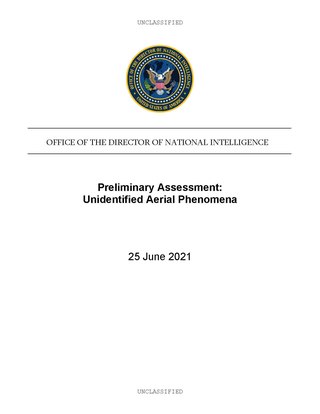
Preliminary Assessment: Unidentified Aerial Phenomena, also known as the UAP Report and colloquially named the Pentagon UFO Report, is a United States federally mandated assessment, prepared and published by the Office of the Director of National Intelligence on June 25, 2021, summarizing information regarding unidentified aerial phenomena (UAPs) which include unidentified flying objects (UFOs). Substantial public attention had been given to the mandated June 25 report, fueled by statements by former high level officials in the U.S. government, including former president Barack Obama, who stated in June 2021 "...there's footage and records of objects in the skies, that we don't know exactly what they are."

"Have We Visitors From Space?" was an article on Flying Saucers by H. B. Darrach Jr. and Robert Ginna that appeared in the April 7, 1952 edition of Life magazine. The piece was strongly sympathetic to the hypothesis that UFOs might be the product of extraterrestrials. Publicity surrounding the piece is believed to have contributed to the 1952 UFO flap, a subsequent wave of reports that summer.
